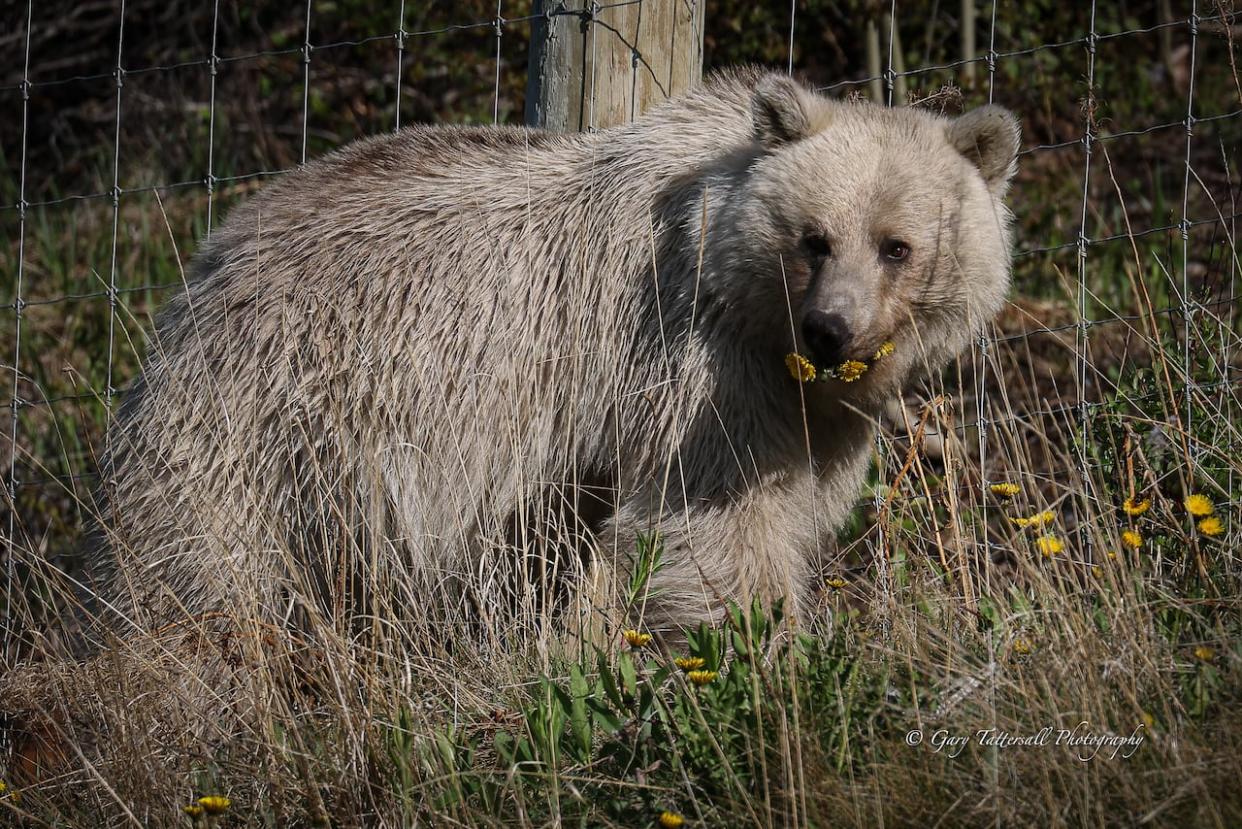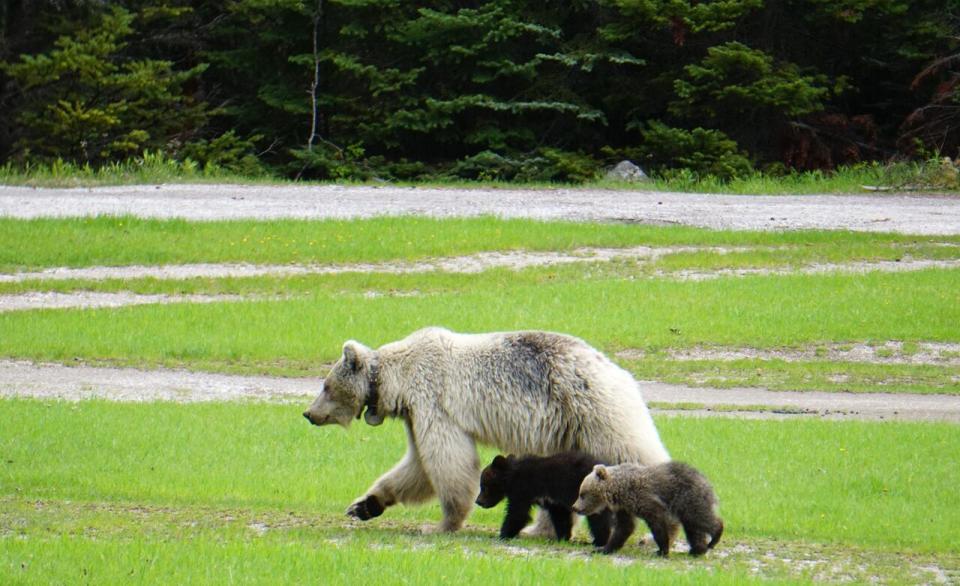Parks Canada officials devastated to report white grizzly, known as Nakoda, has died

After hopes that Bear 178 would walk off her injuries and survive the car crash that left the grizzly limping, the bear affectionately known as Nakoda has died in Yoho National Park, in southeastern B.C., Parks Canada officials confirm.
On the evening of June 6, as wildlife management staff were repairing fencing along the Trans-Canada Highway, roughly 12 kilometres west of Lake Louise, they attempted "to encourage the bear to spend time away from the roadside," a Parks Canada statement said.
Bear 178 was then reportedly startled by a train, causing her to run onto the road in the path of two vehicles.
"One vehicle was able to swerve and avoid a collision, but a second vehicle was unable to react in time and struck the bear," said a Parks Canada spokesperson.
The incident occurred approximately 12 hours after the bear's two cubs were struck and killed on the highway early that morning.
The bear was known for her agility, striking platinum blond fur with a dark stripe along her back, and frequent roadside sightings, especially in the spring and early summer when dandelions line the Trans-Canada Highway ditches.
After she was hit, wildlife managers saw Nakoda climb a fence and run into the woods with a slight limp. On Saturday, June 8, the bear's GPS collar sent a mortality signal, meaning the device had been stationary for 24 hours. The wildlife management team then confirmed the bear's death, suspecting she had "succumbed to internal injuries related to the collision."
Popular on social media
Nakoda's frequent roadside visits made the bear popular on social media, but parks officials said it also made her too comfortable with humans.
"It is an unfortunate reality that bears that become habituated to people often have negative outcomes," said Saundi Stevens, Parks Canada's wildlife management specialist with the Lake Louise, Yoho and Kootenay field unit, in a news conference on Monday.
Parks Canada's wildlife management team spent countless hours managing Nakoda, work that entailed following the bear from dawn to dusk.
"The team has developed a strong fondness and connection with GBF178, and her death has been devastating for the team that was so deeply invested in trying to prevent this outcome," read the statement.
Stevens said Parks Canada implemented a no-stopping zone and speed reduction in the area where the bear and her cubs were spotted along the highway earlier this spring.
While speculation on social media has pointed to the bear returning to the spot where her cubs were hit to grieve them, Stevens said this is not necessarily the case.
"This is an example of anthropomorphizing bear behaviour. In reality, bears often eat their deceased young, which humans might not see as an act of mourning.
"On that day, our wildlife management specialist observed Grizzly 178 along the highway several times between the incident where her cubs were struck that morning and between the time that she was herself struck later that day," she said.
"In all those incidents, she never displayed any signs of distress. She wasn't running back and forth across the highway. She was observed each and every time foraging for dandelions along the roadside in the ditch.
"Just a behaviour that was really typical for her."

Bear 178 is pictured with her two cubs, who were killed after being struck by a car less than a day before she was. (Parks Canada)
Over the years, Nakoda's climbing and road-side antics required many interventions.
In 2022, she was relocated within her home range because of the time she was spending near the highway and near train tracks.
A year later, Parks Canada put up 15 kilometres of electric wiring on fences west of Lake Louise into the Yoho park boundary, partially to stop the white bear from climbing over.
No time to respond
In May 2024, Bear 178 was spotted in Yoho with her cubs, frequenting the highway again. When they returned on June 5, Stevens said her team had limited time to consider how to respond before the incident occurred.
"We just didn't even have a chance to consider [relocation], but by and large, we probably wouldn't have even chosen that as an option because capturing a family group of bears is really difficult and it comes with a high amount of risk; risk of moving a mother bear with cubs into another bear's territory, risk of immobilizing a mother bear that … has young cubs to nurse, the risk of injuring a cub."
Stevens said Parks Canada will continue maintaining wildlife fences lining the highway, and using electrified fences as a tool to keep bears and other wildlife off the highway.
She also emphasized that visitors to the park should not stop to view wildlife, should drive cautiously and obey speed limits.


